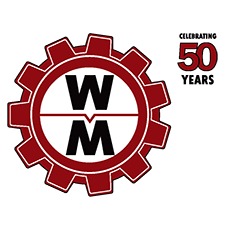There are a lot of questions surrounding press brakes. Like any other form of fabrication technology, press brakes are intricate machines that require specific knowledge to use.
Here are the answers to frequently-asked questions about press brakes:
- How Should I Choose a Press Brake Based on Material and Production Volume?
It’s common to make a mistake on the first bend of a production run. If you’re doing a production run with 2,000 inexpensive workpieces, making that initial mistake is inexpensive. But if you’re doing a production run with 10 expensive workpieces, mistakes are too costly.
So, if you bend inexpensive material, such as mild steel, you can use a common hydraulic press brake that has three to four axes.
If you bend expensive material, such as stainless steel, a more advanced and accurate electronic press brake is needed.
In the case of expensive material, it helps to have a press brake that can analyze workpieces and determine the appropriate bending pressure. For example, SafanDarley press brakes measure sheet thickness. This feature addresses a common problem fabricators face: inconsistent material size. A 16 gauge workpiece can be 63 thousandths of an inch thick in one purchase, and 67 the next.
If the operator is unaware of the exact thickness, he will make mistake after mistake bending it. The ROI of the material will be greatly hurt as a result.
- How Many Axes of Control Will My Press Brake Need?
It’s common to make a mistake on the first bend of a production run. If you’re doing a production run with 2,000 inexpensive workpieces, making that initial mistake is inexpensive. But if you’re doing a production run with 10 expensive workpieces, mistakes are too costly.
So, if you bend inexpensive material, such as mild steel, you can use a common hydraulic press brake that has three to four axes.
- Will I Need a Press Brake with CNC Controls?
It’s common to make a mistake on the first bend of a production run. If you’re doing a production run with 2,000 inexpensive workpieces, making that initial mistake is inexpensive. But if you’re doing a production run with 10 expensive workpieces, mistakes are too costly.
So, if you bend inexpensive material, such as mild steel, you can use a common hydraulic press brake that has three to four axes.
If you bend expensive material, such as stainless steel, a more advanced and accurate electronic press brake is needed.
In the case of expensive material, it helps to have a press brake that can analyze workpieces and determine the appropriate bending pressure. For example, SafanDarley press brakes measure sheet thickness. This feature addresses a common problem fabricators face: inconsistent material size. A 16 gauge workpiece can be 63 thousandths of an inch thick in one purchase, and 67 the next.

How can we help?
Contact our team and we can help you with your questions.
